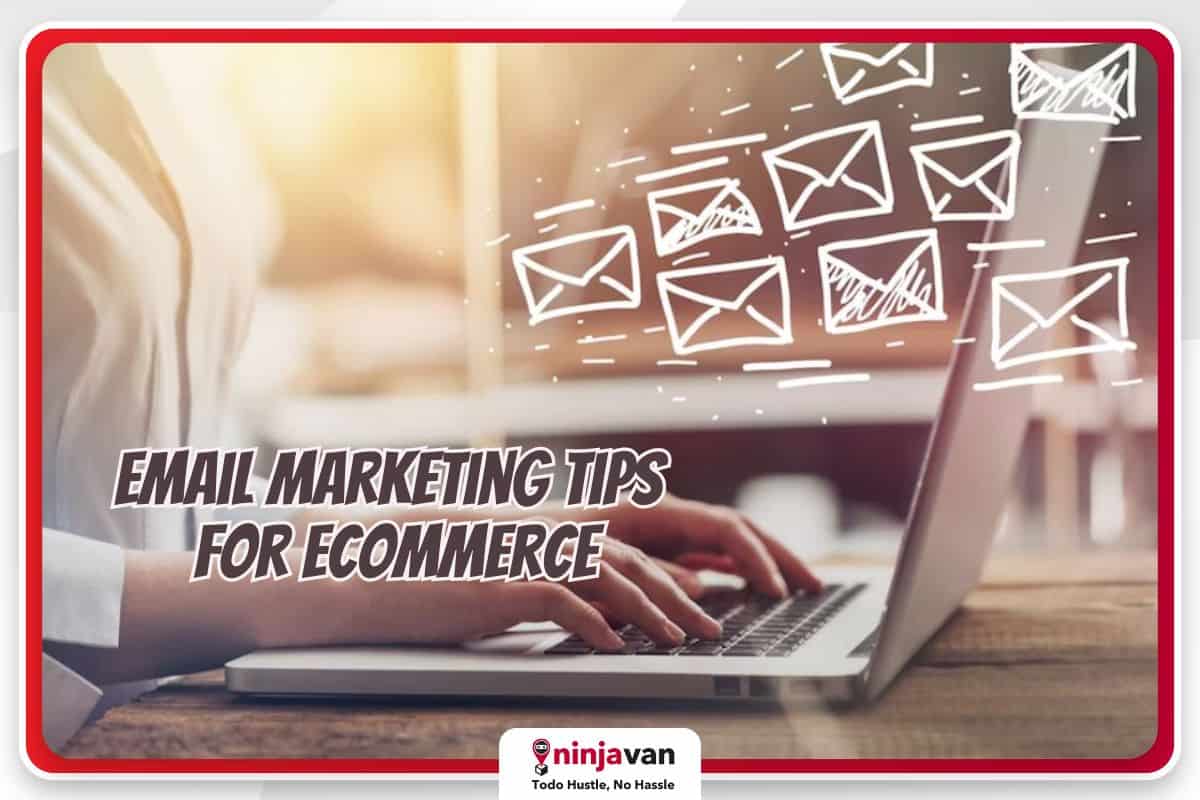Your customers might be spending most of their time on social media, but that doesn’t mean they won’t see any of the marketing messages you send them through email. After all, they check their inboxes daily, too.
This makes email marketing an important tool, especially for ecommerce leaders.
Many businesses, however, still don’t include it in their ecommerce strategy. If you’re one of them, you’re missing out on many opportunities.
What is email marketing?
Many think that email marketing is spamming customers with a bunch of emails and that’s it. While this tactic does involve sending emails, this practice involves sending commercial emails to a list of potential customers who have given their consent to receive messages from you.
Businesses use email marketing to inform their customers, drive more sales and build a community around their brand.
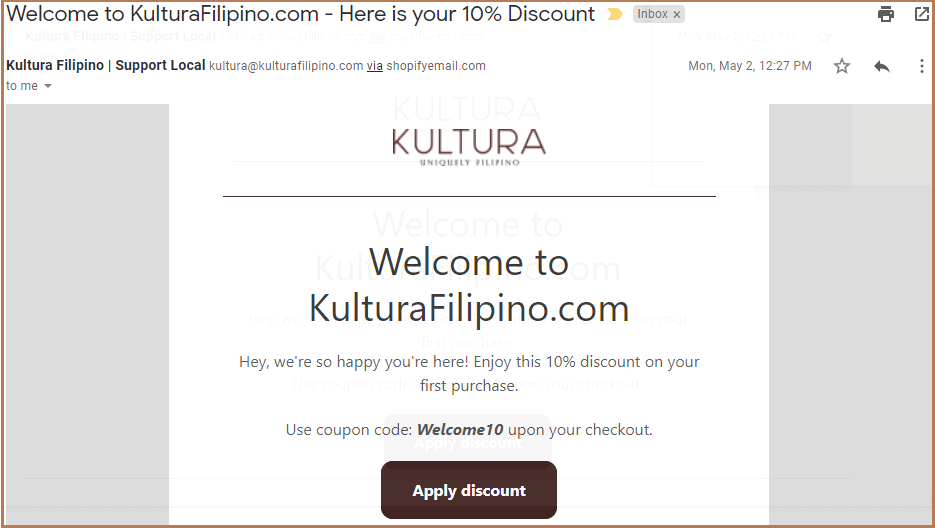
Image source: Kultura Pilipino
Today’s email marketing has moved away from traditional mass mailings and one-size-fits-all messaging. Instead, it focuses on personalization, segmentation and consent. Businesses that use email marketing tools often send the following emails:
- Welcome emails
- Promotional offers
- Newsletters
- Lead nurturing emails
- Re-engagement emails
- Sponsorship emails
- Brand story emails
- Transactional emails
This means you can customize your messaging based on where your customers are in their buyer’s journey.

Why email marketing is important for ecommerce
Email marketing is crucial for ecommerce businesses for several key reasons.
1. Highly effective
Email marketing boasts impressive reach and conversion rates. Studies show it can reach up to 90% of your customers and convert at a significantly higher rate compared to social media or search. In fact 99% percent of email users check their emails every day, some even several times a day.
2. Cost-effective
Sending emails is relatively inexpensive, yet it can drive significant sales and revenue. 159% of B2B marketers credit email as their top channel for revenue generation, and 59% of email users say marketing emails influenced their purchase decisions.
3. Personalized and targeted communication
Unlike social media’s dependence on algorithms, email allows direct communication with your customers. You can personalize messages based on their interests, demographics, and purchase history, fostering stronger connections.
Segmenting your email list lets you send targeted messages based on specific customer groups. This personalization increases relevance and resonates better with each recipient.
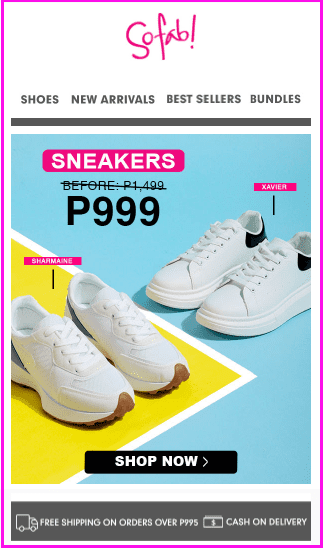
influenced their purchase decisions. Image source: SoFab.
4. Customer preference
Many people still prefer communication via email. By subscribing, they actively opt-in to receive your messages, indicating receptivity to your brand and offerings.
5. Owned platform
Unlike social media platforms where you rely on their algorithms, you own your email list. This gives you greater control over your audience and communication channels.
6. Measurable results
You can track email performance metrics like open rates, click-through rates, and conversions, allowing you to analyze effectiveness and optimize your campaigns for better results.
7. Brand awareness and engagement
Regular email communication keeps your brand fresh in customers’ minds. You can share valuable content, promotions, and news, fostering engagement and building brand loyalty. 79% of B2B marketers also cite email as the most effective channel to drive awareness about a brand or product
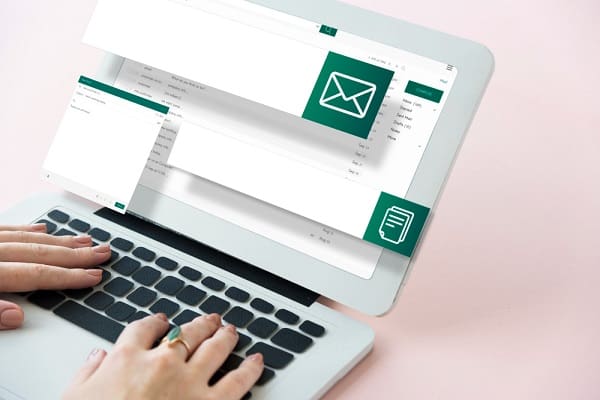
8. Cross-selling and upselling
Through targeted email campaigns, you can suggest complementary products or upgrades, encouraging customers to spend more and increasing your average order value. Here are some Upselling Techniques for Your Online Business.
9. Abandoned cart recovery
Emails reminding customers about items left in their carts can prompt them to complete their purchase, potentially recovering lost sales. Check out our other tips on How to Reduce Cart Abandonment and increase your sales.
10+ email marketing trends for 2024
As you navigate the ever-evolving landscape of email marketing, staying ahead of the curve is key. Here are some of the top trends for 2024 that you should consider incorporating into your strategy.
Personalization and hyper-personalization:
- AI-driven insights. Leverage AI to analyze customer data and predict interests, allowing for highly targeted and personalized content recommendations.
- Interactive elements. Go beyond static text! Polls, quizzes and product recommendations within emails can boost engagement and personalize the experience further.
- Dynamic content blocks. Tailor specific sections of your email based on recipient demographics, purchase history, or other relevant data for maximum relevance.
Engagement through innovation:
- Minimalistic & mobile-first design. Clean layouts, optimized images, and touch-friendly elements are essential for the mobile-dominant audience.
- Interactive experiences. Explore elements like animated GIFs, product configurators or even augmented reality (AR) to create immersive and engaging emails.
- User-generated content (UGC). Incorporate customer testimonials, social media mentions, or product reviews into your emails to build trust and social proof.
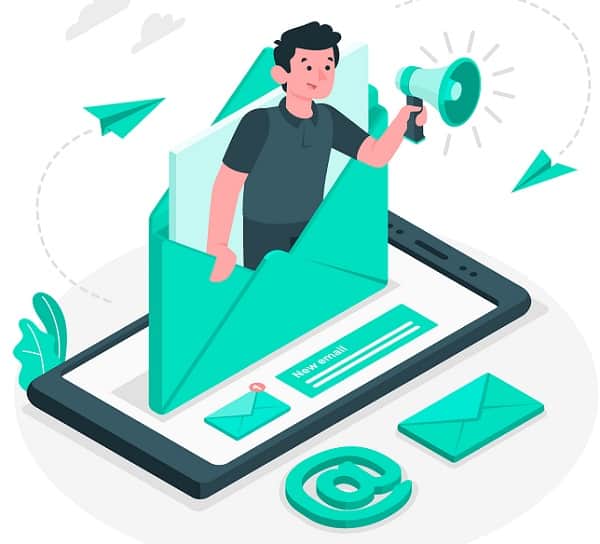
gets across.
Prioritize privacy:
- Focus on first-party data. With heightened privacy concerns and restrictions, collecting and utilizing your own customer data ethically is crucial. Build trust by being transparent about data usage and offering clear opt-in and opt-out options.
- Embrace authentication protocols. DMARC, DKIM, and SPF help establish sender legitimacy and avoid spam filters, ensuring your emails reach your audience’s inbox.
Additional key trends:
- Short-form content. Attention spans are short, so keep your emails concise and focused on delivering value quickly.
- Storytelling with visuals. Compelling narratives and high-quality visuals can capture attention and resonate with your audience.
- Ethical and inclusive marketing. Ensure your email campaigns are inclusive and represent diverse perspectives to build trust and connect with a wider audience.
- Accessibility considerations. Make your emails accessible to everyone by using alt text for images, clear fonts, and proper color contrast.
Getting started with email marketing
An email marketing strategy is crucial if you want to build more meaningful connections with your current and potential customers (aka the fuel behind your sales). Here are some proven strategies you can try for your business.
1. Target different segments via personalization
Start by segmenting your list into demographic groups: age, education, gender identity and income. Then identify where they are in buyer’s journey: new customer, returning customer, customer ready to purchase (added to cart), customer for retargeting (abandoned cart), etc.
Once you’ve identified who your customers are and their buying behavior, customize your email content according to this data.
2. Use engaging subject lines
Create a subject line that is clear and concise. Especially since more people are viewing their emails on mobile devices. Mobile users can’t see long subject lines, so keep it short but make sure it contains the important information.
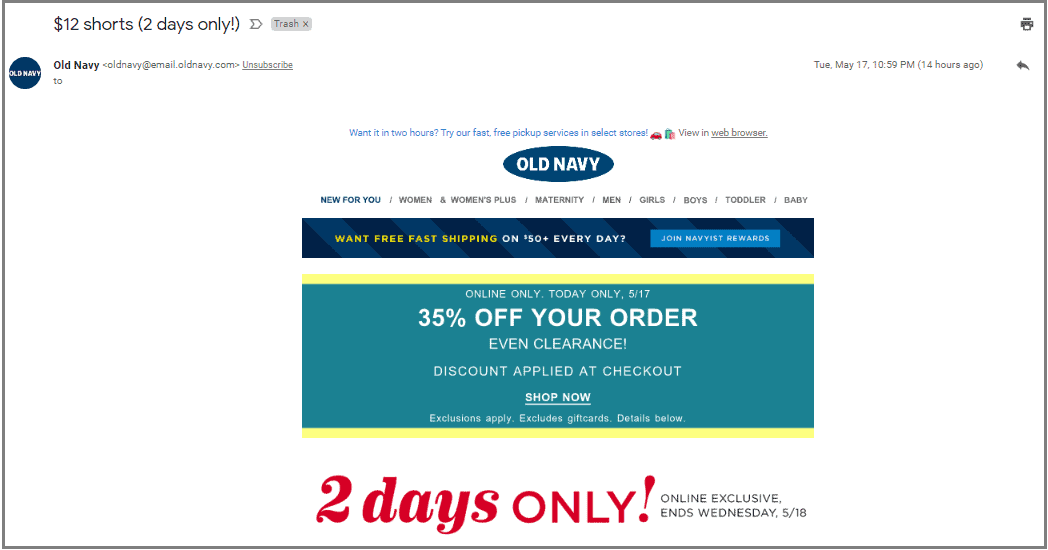
Image source: Old Navy
3. Use multimedia content in your emails
Eye-catching emails include visuals. Multimedia content — such as custom GIFs, videos and designed graphics — can make your content pop. If part of your ecommerce email marketing plan is to show off your offers, include photos and videos of your products.
4. Cover a variety of topics
The best emails don’t sound like a sales pitch. Instead, they cover interesting topics that subtly drive purchases. Consider the following email content ideas:
- New items in stock (or back in stock)
- How-to features
- Policy changes or company news
- Seasonal trends in your industry
5. Exercise restraint when sending emails
There’s a fine line between aggressive and annoying. A rule of thumb is to avoid sending more than one sales-oriented email per week. You can be aggressive during special occasions instead, such as year-end season sales or big anniversary promos.

Email marketing is key to your ecommerce success
The truth about website traffic is many people visiting your online store will not return — unless you give them reasons to do so.
Sending compelling emails and building an email list by providing subscribers with incentives helps you retain the traffic you earned. If your ecommerce business uses email marketing tools, you can:
- Drive more sales
- Maintain and strengthen customer relationships
- Improve your marketing strategy without breaking your budget

Your customers like hearing from you more than you know; they prefer getting brand offers through email than any other channel. But make sure opening your emails will be worth their time.
More Marketing tips for your ecommerce business:
How To Create Irresistible Product Bundles
7 Simple Things That Turn Off Customers
How to Improve Your Product Visibility Online

